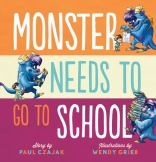CONGRATULATIONS to the many participants of RhyPiBoMo 2016! We did it!
WHOOT! WHOOT!
Grab this badge and proudly place it on your websites, blogs and social media pages!!!
You read the many wonderful blog posts, you commented daily, you read stacks and stacks of rhyming picture books and you shared your favorite’s on social media! This month of celebrating the genre that we love has been an amazing labor of love for us all. I always feel blessed to have so many supportive folks join me in April and many friendships have been formed through this event. Many critique groups and even some new RPBs have been published along the way! I thank you all for cheering me on as I grew weary in week 4. You have all been so uplifting and incredibly kind in your many comments, emails and messages and support through the auction and conference recording purchases!
I will be doing RhyPiBoMo in 2017 but I am letting you know that I will not be doing RhyPiBoMo in 2018 because…in it’s place, I will be hosting the 2nd RPB Revolution Conference in April of 2018! And Karma Wilson is coming too!!! It will most likely be in Florida and I will offer the option for extended stays to write on the beach afterwards. I will also offer a payment plan, requiring a deposit to hold your spot, as there will be a limited number of spots. Please follow our RhyPiBoMo Facebook Group to keep up to date on the details. I will be asking for names of people interested, to get an idea of how many to plan for.

I’m very excited about the future of RPBs and the message to writers of rhyme about how we can improve the quality and professionalism of the manuscripts submitted to editors and agents. A friend recently showed me an editor’s comment stating that the “Quality of rhyming picture books being received has improved.” That makes me smile! That is good for us all!! Especially the parents, teachers and kids that we write for. So, I will see you here, same time next year and I will see you at the beach in 2018, where “The RPB Revolutionaries” will leave footprints in the sand! Bring your rhyming dictionaries and your sunblock!
 I’m pleased
I’m pleased
to introduce
Author Paul Czajak

Writing Rhyming Stories That Sell
So I was given the task of blogging about how to write a rhyming picture book that sells. If that isn’t a loaded topic I don’t know what is! I hate to break it to you but, there is no secret formula. There is no all inclusive blog post that is going to give you the answer. If there was, every one of my rhyming picture books would have sold.
Let me tell you, they haven’t. Not even close.
So if you want to stop reading now because I can’t give you the perfect answer, then please do. Go and scour the internet until the end of days looking for the perfect answer, all the while getting zero writing done. Go I’ll wait.
OK, now that the pretend writers have left, and the true professionals have stuck around we can get down to business. I may not have a secret formula to help you sell that book you are working on, but I can give you some tips that helped me.
Number one, stop focusing on the rhyme, that’s not what is going to sell your book. What’s going to sell your book is the story. The story is the most important part of any book, whether it rhymes or not. If your story sucks, then I could care less that your meter and rhyme are perfect. Remember rhyme will not make a bad story good!
The Three Ninja Pigs, by Corey Rosen Shwartz,
Bats at the Ball Game, by Brian Lies,

Madaline, by Ludwig Bemelmans,
All three of these picture books are all rhyming books. But more importantly these are all great stories. If you’ve read these books (if you haven’t you should) I would be willing to bet your first reaction wasn’t, wow, what a great rhyme scheme. It was, I love this story! Their characters are engaging and memorable. Their stories are original, clever and not a one time read. Children can imagine themselves in place of the characters. As a writer, if you can pull that off, then the child will want to read it over and over again. It’s one of the reasons I never named the boy in my Monster&Me series. I wanted kids to be able to imagine themselves in place of the boy. So by removing that extra barrier, i.e. the name. I’m hoping children hearing the book become that much more engaged. Does it work? Only time will tell.
Number two, focus on the rhyme. I know, a bit confusing since I just told you not to. But once you have the story your rhyme and meter needs to be perfect. Remember poor rhyme can make a great story bad.
I am sure you have already heard the typical list of things to avoid:
Near rhyme
Backwards talk
Changing meter
Simple rhyme
Forced rhyme.
The reason you keep seeing these things to avoid, is because it’s that important to writing a good rhyming book.
Near rhyme, just wont do. Have a thesaurus and a rhyming dictionary open when you are writing at all times. There are so many wonderful rhyming words out there, so there is no reason to settle.
Backwards talk, or speaking unnaturally just for the rhyme is lazy. Sometimes a rhyme isn’t going to work they way you want it to and your only alternative is to rewrite the stanza, maybe even rewrite the one before. Really, what ever it takes to make a natural sounding stanza is what you need to do. What I’m trying to say is, put in the work and write!
Changing your meter, next to having a crappy story, is probably the biggest culprit when it comes to a rhyming story not selling. When the meter keeps switching it makes it painful to read. Unfortunately we as writers become deaf to our own writing. To counter act this we need to have other people read our stories to us so that we can hear where people stumble. Stop counting syllables. What drives your meter is not the syllable count, but the stress on the word being used. If you have a difficult time hearing a stressed syllable and an unstressed syllable then try tapping it out. When your finger is in the air it’s an unstressed syllable, when it hits the table it’s stressed. If your meter is off, your reading will try to keep the rhythm, but your finger won’t be able to.
Simple rhyme is not a story killer. Every story is going to have its hat, bat rhyme. But what makes a story shine are rhymes like casserole and profiterole or procrastinating and negotiating. You’re a writer be a writer.
Forced rhyme, this is up there with backwards talk. You are just doing it for the rhyme. Please don’t. It’s another sign of being a lazy writer. You are better then that. How do I know? Because you are here still reading this post. You want to learn. You want to be the best writer you can possibly be. So be it.
Now that I’ve laid out the major no, no’s I’m going to confuse you all with the old saying, Rules Were Made to be Broken. This is where I feel you can make your story shine, when you break the rules. But, there has to be a reason you are doing it. For example let’s go back to Bats at the Ball Game. In this story the meter changes. “How dare he!” You say. “Burn him! Run him out of publishing!” OK, maybe not burn him, I got carried away. Actually I think Brian Lies should be applauded. Why you ask? Because it he did it on purpose and it works. He uses the change in meter to portray a shift in the story. Something like this will absolutely catch an editors eye, because it’s unusual and it stands out.
In one of my newer Monster books, Monster Needs A Hug, Monster is having such a bad day that he decides to do everything backwards to turn his day around. That means talking backwards. Again, another rule breaker but, done on purpose for the sake of the story.
So to sum up, writing in rhyme is just like writing in prose. You have to focus on the story first. Whether you are adhering to the rhyming rules or breaking them, it has to be all about the story. And remember,
Rhyme will never make a bad story good, but it can make a good story bad.
BIO
Paul Czajak got an F with the words “get a tutor” on his college writing paper and, after that, he never thought he’d become a writer. But after spending twenty years as a chemist, he knew his creativity could no longer be contained. Paul lives in New Jersey with his wife and two little monsters. In addition to the Monster & Me™ series, he’s also the author of Seaver the Weaver, and a contributor to The Huffington Post. Look for his newest book, Monster Needs To Go To School, out on the shelves September 2016!
TWITTER @pczajak
Mighty Media Press
Thank You Paul!
PLEASE like our guest bloggers on Facebook, follow them on Twitter, go to their websites and express your appreciation for their time and wisdom! Many have generously donated multiple prizes and this event would not be successful without their support, so please support them! Oh…and buy their books too!!

To be eligible for today’s prize drawing by Random.org you must comment at the bottom of the page where it says “Leave A Reply” AND add your FIRST and LAST name in the comment. If I don’t have your name or how to contact you via email, you can’t win.
You must be a member of the RhyPiBoMo Facebook Group and if you haven’t officially registered, you are not eligible to win.
Please follow the pledge rules daily to get the most out of this challenge!

The drawings will be done daily and announced next week.




Thanks for your post, Paul. Your suggestions are a challenge and I’m eager to try them. I will try the finger test next time I edit my story. Not only that I’m going to get in there and buff up my story with more interesting, multi-syllabic rhyming words.
Debbie McCue
Wonderful post. Thank you, Paul.
Debbie Smart – Thank you, Paul! Appreciate your time and your insight into rhyming words and works!
Thanks, Paul for keeping it real . . . story above all.
Shirley Johnson – Thanks for your post.
Chris Clayson – thank you Paul Czajak for telling writing like it is. The story is king and the rest follows. They all work together to become awesome.
Susan Schade
I loved, loved, LOVED this post! Great reminders. Thank you!
Joy Main – Thank you Paul for an inspiring post!
Kirsti Call
Thanks Paul for a great post from a great poet!
Mary Warth
Thanks for such an information packed post!
Ann Magee
Thanks for the advice. Yes, the rhyme serves the story. Period.
“The Story is the boss.” Stephen King
Judy Sobanski
Thank you for the reminder that story comes first. It’s easy to forget if one is in the “rhyme zone” when writing.
WOW — inspiring story, Paul — thanks for sharing! And Angie, thanks for bringing RhyPiBoIdMo to Florida!!! (Lynne Marie)
Lynn Alpert
Great reminder that story is KING!
DebbieLubbert I LOVE Madeline! Fun post!
Thanks! Love your work.